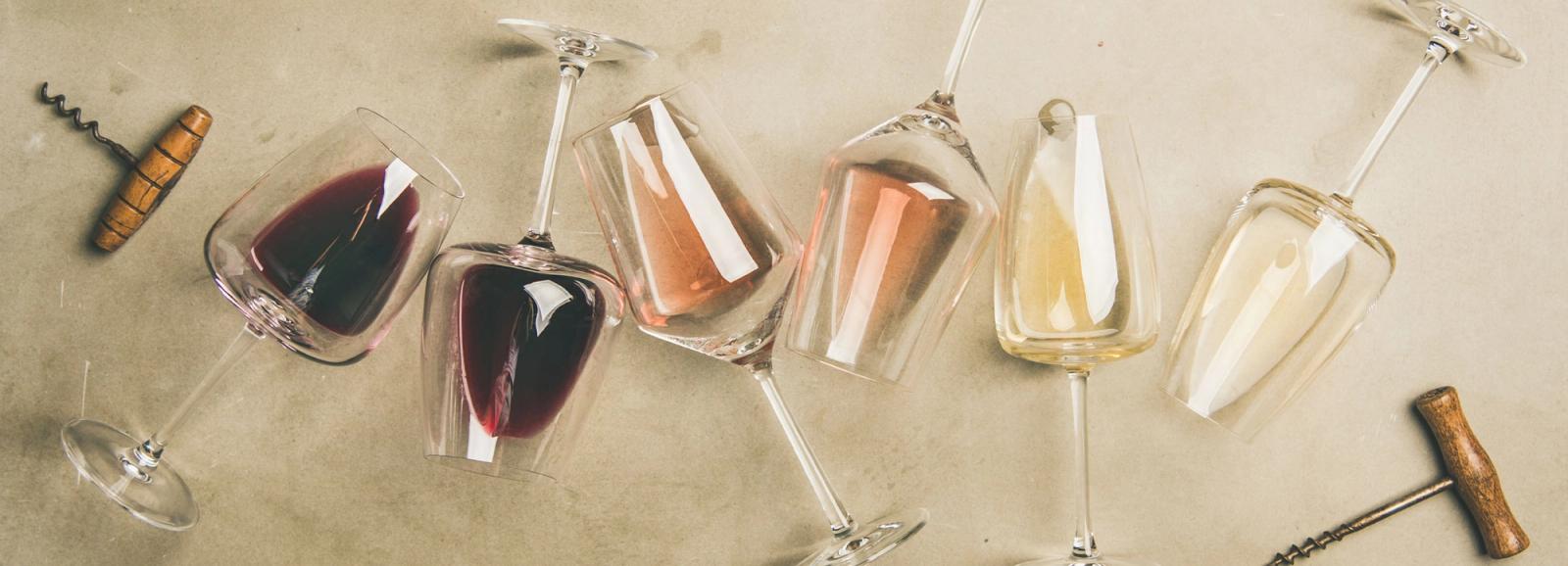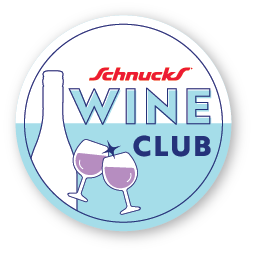Wine 101
We’ve got tips and tricks from our experts for an easy way to learn about wine—from selecting your wine style to taking the first sip, and everything in between.

Wine Glossary
Acidity
The liveliness and crispness in wine that balances out the sweet and bitter components.
Aeration
Exposing wine to air so that it can breathe before drinking it. The oxygen helps release the aromas and flavors much like swirling a glass of wine.
Aging
Holding wine in barrels, tanks and bottles to advance them to a more desirable state.
Alcohol By Volume (ABV)
The measure of the alcohol levels in an alcoholic beverage. The average glass of wine contains about 11-13% alcohol, but bottles can range from 5.5-20% ABV.
Appellation
This identifies the regions where wine grapes were grown.
Aroma
The smell of wine, sometimes described as bouquet or nose of the wine.
Balance
Refers to the elements of wine - acids, sugars, tannins and alcohol - coming together in a harmonious way.
Bitter
A taste sensation that is sensed on the back of the tongue and caused by tannins.
Blend
A wine made from multiple grape varieties.
Body
A term used to describe the weight and fullness of wine; a wine can be light, medium or full bodied.
Breathing
Exposing wine to oxygen to improve its flavors.
Brut
French term for dry, most often used to describe Champagnes or sparkling wines.
Cava
The “Champagne” of Spain; Spanish sparkling wine produced in the traditional method.
Champagne
Sparkling wine made in the French region of Champagne. Only sparkling wine produced in this region can be called Champagne with a capital “C.”
Chardonnay
A wine grape from Burgundy, France that’s also used in Champagne and makes exceptional wines in many of the world’s finest regions.
Closed
A term describing underdeveloped and young wines whose flavors are not exhibiting well, but will benefit from contact with air.
Complex
A wine exhibiting numerous odors, nuances and flavors.
Corked
A cork finished wine that has been ruined by the chemical TCA which will cause the wine to smell musty and lose its positive flavors.
Dessert Wine
A wine with a considerable amount of residual sugar. Examples include ice wine, Sauternes and Moscato d’Asti.
Dry
The absence of sugar in a wine.
Earthy
An odor of flavor reminiscent of damp soil or a forest floor.
Enology
The art and science of wine and winemaking.
Fermentation
Winemaking process that turns grape juice into alcohol. During the chemical process, yeast converts sugars into ethanol and carbon dioxide, giving wine its alcohol content.
Finish
The taste of flavors that linger in the mouth after tasting wine.
Fortified
Wines with higher than normal alcohol due to the addition of neutral brandy or spirits. Best-known fortified wines are Port, Sherry and Madeira.
Fruity
Wines that exhibit strong smells and flavors of fresh fruit.
Full-Bodied
Wines that exhibit bold flavors due to oak barrel aging or a high level of tannins and alcohol.
Merlot
A black grape variety with origins in the Bordeaux region of France; red wine made from this grape is typically dry, mild and with low-tannins.
New World Wine
Any wine from non-traditional European winegrowing regions, such as South Africa, Australia, New Zealand, Chile, Argentina and the U.S.
Old World Wine
Traditional winegrowing regions in Europe, such as France, Italy, Spain and Germany.
Pinot
Translates to “pine” in French; any black or white grape variety used to make Pinot Noir, or its mutations Pinot Gris (Grigio) and Pinot Blanc.
Red Wine
Wine which through skin contact during the fermentation process shows dark-colors, ranging from deep purple to brick red to brown.
Reserve
A wine that has undergone additional aging and may be sourced from a winery’s finest, or estate-grown grapes. Typically, a winery’s best wine.
Rose
Genre of wine made from any red grape; signature pink hue is created by the shorter contact with the grape skins as it ferments.
Sommelier
A certified wine expert who suggests, selects and serves wine. The certification is governed by the Court of Master Sommeliers.
Sparkling Wine
Fizzy and bubbly wine as a result of its carbon dioxide content.
Table Wine
Non-sparkling, everyday wine that’s affordable and of decent quality.
Tannins
Natural compounds in wine that create an astringent, drying and bitter flavor; red wines are typically more tannic than white wines. Tannins also contain health benefits.
Viniculture
The practice of cultivating grapes for winemaking.
Vintage
The year on the label that represents the year the grapes were harvested.
Viticulture
The practice of grape growing for the purpose of producing wine.
White Wine
Type of wine produced from grapes that are fermented without grape skin contact.
Zinfandel
Black-skinned wine grape variety grown in California.
| Style | Characteristics | Pair With |
|---|---|---|
| Crisp White | Refreshing, clean, bright, citrusy | Salads, Cheese, Shellfish, Flaky Fish, Spicy Foods |
| Silky White | Versatile, creamy, vanilla | Pasta, chicken, fish, soft cheeses |
| Rich White | Oaky, buttery | Dishes with cream-based sauces, oily fish, turkey, pork |
| Fruity Red | Fruity, floral, crisp | Salads, pizza, salmon, chicken, sandwiches |
| Mellow Red | Round, velvety, smooth | Pasta, beef, pork, veal |
| Bold Red | Intense, complex, heavy | Hard cheeses, red meat, spicy and flavorful dishes |
| Bubbly | Effervescent, light, crisp, toasty | Appetizers, desserts, berries, chocolate |

Wine Ratings
Wine critics share their opinions on the quality of a wine using a variety of wine score scales.

SCHNUCKS WINE CLUB
Get 15% off wine purchases every day through the Schnucks Wine Club
Do you love wine? Do you love discounts? Join the Schnucks Wine Club and start saving on all of your wine purchases* today!
*limited to purchases of 750ml bottles of wine.